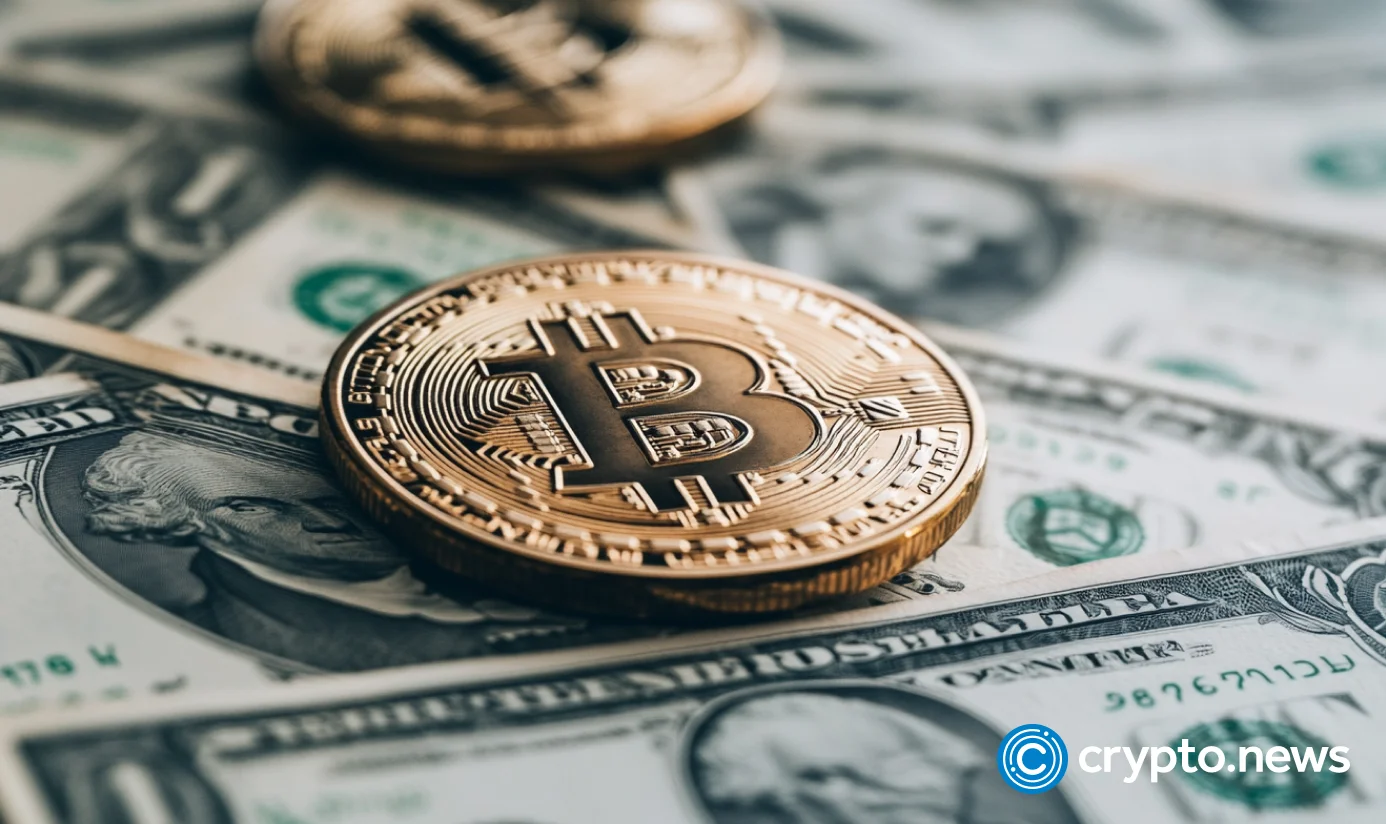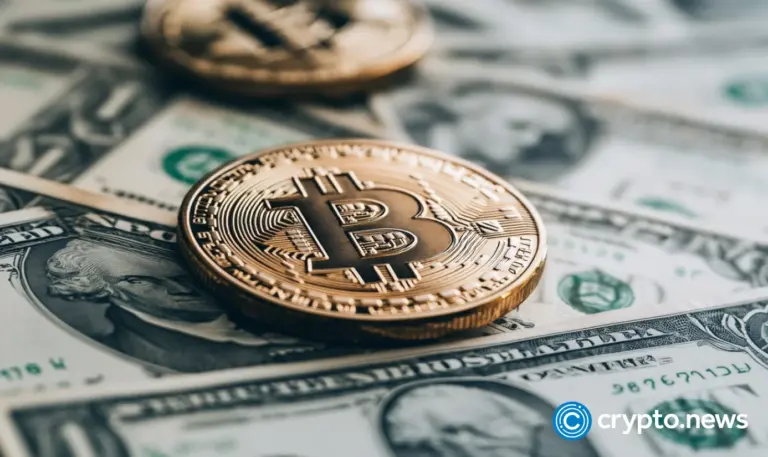
Bitcoin was conceived as the first sustainable electronic commerce network independent of financial institutions. Fifteen years later, there is much talk about how Bitcoin will strengthen the American dollar, while financial institutions are investing in cryptocurrency. At the same time, it is still possible to come across remarks like “fiat money’s days are counted” when the Bitcoin price goes up. Is Bitcoin a threat to the traditional financial system?
What do we learn from the Bitcoin whitepaper?
Before launching the Bitcoin network on Jan. 3, 2009, Satoshi Nakamoto released the Bitcoin whitepaper, a nine-page document explaining the purpose and functioning of Bitcoin. It is titled “Bitcoin: A Peer-to-Peer Electronic Cash System.”
The Bitcoin whitepaper has a clear message regarding banks and the need for Bitcoin as a healthier alternative. Nakamoto states that the traditional commerce system “works well enough for most transactions,” however, he outlines several problems that he intends to solve using Bitcoin.
He emphasizes that the involvement of banks between the two counterparts creates additional costs for the mediation of the transaction. More than that, the system faces the task of struggling with fraudsters. It increases the costs and undermines privacy, as banks have to collect user information in order to ensure the authenticity of transactions. Despite this, fraud transactions are inevitable. Additionally, the mediation of banks means that transactions are reversible by design.
So, Bitcoin is intended to serve as a means of remote payments free of the mentioned issues, and Satoshi Nakamoto found the technical workaround for the problems inherent to transactions operated by banks. Nakamoto stresses that, unlike banks, Bitcoin is a trustless system, meaning that a third party cannot intervene in the transaction between two parties.
Nakamoto has criticized banks, both in the whitepaper and in a sophisticated way in the Genesis block, to which he attached a newspaper headline pointing at the situation in which the government is bailing out banks amidst the economic crisis of 2008.
However, instead of opposing banks or subjecting the banking system to scrutiny, Nakamoto offered an alternative system that may complement the banking system and deliver additional options to those who need them. Despite Bitcoin’s own drawbacks, the network is alive to this day and is gradually being absorbed by governments and financial institutions. Banks are creating Bitcoin treasuries these days.
Bitcoin as a banking system competitor
While some see Bitcoin as a replacement for the traditional financial system or central banks, it doesn’t seem to be the case. Bitcoin is good for sending transactions across the globe. As history has proven, Bitcoin has a great potential for long-term value appreciation, so it can be used as a store of value. The latter characteristic became the reason why, in 2025, various governments and companies started to grow their Bitcoin treasuries.
Stablecoins are a type of cryptocurrency that has huge potential and significance. Those who can’t stand Bitcoin’s volatility prefer stablecoins both as a store of value and as a means of remittance. More than that, stablecoins may have significance for central banks, but we’ll address this in the last section of the article.
Bitcoin itself is not fit to replace the banks. It doesn’t regulate interest rates nor manipulate the money printing. You cannot get a loan using Bitcoin (however, it is possible to do it via specific DeFi platforms that we don’t discuss in this article).
However, Bitcoin and other cryptocurrencies are in use as a store of value and remittance tool in multiple African countries where millions of people don’t have bank accounts, but the smartphone penetration rate is high, which opens an opportunity to use blockchain-based solutions as a replacement for the banking services. However, the main type of crypto in Africa is stablecoins.
Finally, there is a way to rationally interpret messages about the potential defeat of the fiat money system to Bitcoin. It shouldn’t be understood literally as Bitcoin replacing fiat money, but as the preference for Bitcoin over fiat money when it comes to savings. Some people prefer to save money with Bitcoin, as its price is more sustainable than that of national currencies in their countries.
So, when someone reacts to another Bitcoin price spike by saying “fiat money’s days are counted,” it means that it becomes less and less rational to save money in national currency. However, as of 2025, it is still easier to spend money using traditional avenues.
How do institutional investors and governments instrumentalize Bitcoin?
Institutional investors are getting increasingly interested in Bitcoin. It’s early to declare that Bitcoin is something normal for all of them, but these days, Bitcoin is way less marginal than it was in 2017 or even 2021. They start to perceive Bitcoin as a strategic investment.
The latest Gallup poll shows only 4% of Americans see crypto as a worthy investment, preferring to invest in real estate, gold, and stocks. However, in 2024, Bitcoin investments brought bigger returns than the NASDAQ stocks. It couldn’t go unnoticed by professional traders and investors.
BlackRock has a Bitcoin-based ETF called IBIT. The capital management giant recommends allocating up to 2% of the portfolio to Bitcoin. BlackRock manages over 625,000 bitcoins, which is nearly 3% of Bitcoin’s total supply.
Bitcoin ETFs approved in early 2024 allowed huge institutional investors to take advantage of Bitcoin’s ascending value. Strategy (formerly known as MicroStrategy) became a Bitcoin Standard-based public company, meaning that it gradually collects more and more Bitcoin in its treasury. Its stock MSTR became the fastest-growing stock.
Governments see the use of Bitcoin in various ways. For instance, Russia and Iran use crypto, including Bitcoin, to bypass Western sanctions in their overseas trade. North Korean hackers steal crypto to fund the country’s nuclear program. The U.S. needs Bitcoin to weaken the American dollar, which will leverage export trades, while popular USD-pegged stablecoins will continue to keep the dollar as a global reserve currency.
Conclusion
It’s hard to say how radically anti-banking Satoshi Nakamoto himself was. In his whitepaper, he only outlined several issues with the banking system and offered a workaround. While Bitcoin was made to empower individuals’ financial independence, it has now become a staple of Wall Street and the government, which doesn’t mean that others are somehow blocked from Bitcoin’s advantages. Love it or hate it, the anti-banking ethos is not mainstream among Bitcoin investors.

